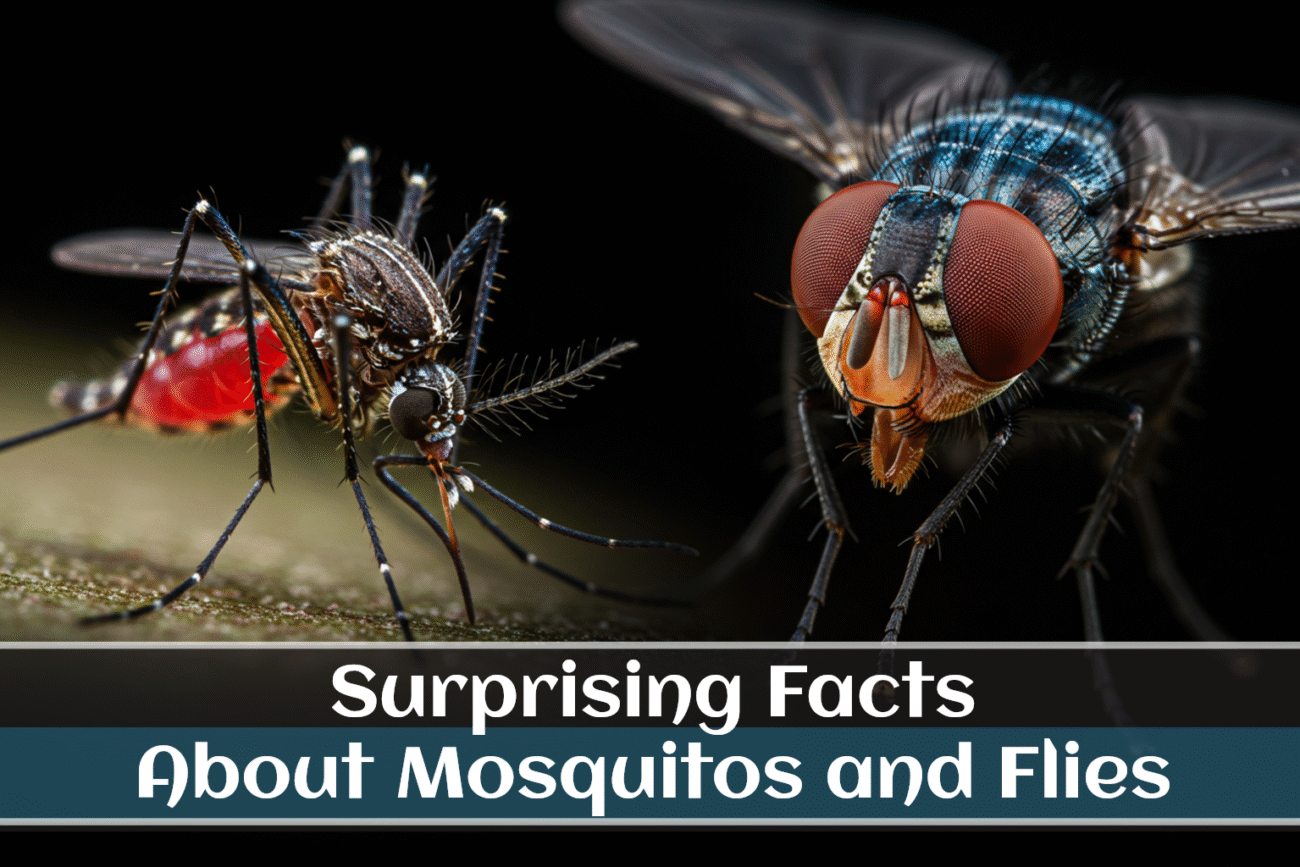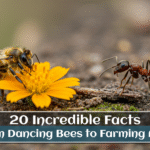From the high-pitched whine that signals a sleepless night to the persistent buzzing around your lunch, mosquitoes and flies are masters of making their presence known. We often dismiss them as simple, irritating pests, but this view barely scratches the surface. Hiding within their tiny frames is a world of incredible biology, sophisticated tools, and mind-boggling abilities. This article will uncover 20 surprising bug facts about these common insects, revealing the secrets that make them some of the most successful survivors on the planet.
Prepare to be amazed. The creatures we try so hard to get rid of are far more complex than we give them credit for. You will discover that the mosquito is a surgical expert and that the fly sees our world in a way we can’t even imagine. These surprising bug facts are not just random trivia; they are a deep dive into the miniature dramas of life, death, and survival unfolding right under our noses.
The Mosquito: The World’s Smallest, Deadliest Hunter
The mosquito is more than just an itch waiting to happen. It is a highly evolved creature with a set of skills that have made it a notorious and incredibly effective hunter. Its life is a fascinating story of precision, adaptation, and danger, filled with surprising bug facts that will change how you see your next bite.
1. Only the Females Are After Your Blood
Have you ever felt personally victimized by a mosquito? The truth is, it’s not a personal vendetta. In the world of mosquitoes, only the females bite. Male mosquitoes are peaceful vegetarians, perfectly happy sipping on the sweet nectar of flowers. The females, however, have a crucial need for the protein and iron found in blood. It’s the essential ingredient they require to produce and nourish their eggs. So, that itchy welt is a direct result of a mother-to-be gathering the necessary provisions for her family. This is the cornerstone of their unique mosquito feeding habits.
2. It Is Officially the World’s Deadliest Animal
When you think of deadly animals, images of sharks, lions, or venomous snakes probably come to mind. However, the official title of the world’s deadliest animal belongs to the tiny mosquito. This isn’t because of its bite, but because of what it carries. Mosquitoes are vectors for a host of devastating diseases, including malaria, dengue fever, Zika virus, and West Nile virus. By transmitting these pathogens from person to person, mosquitoes are responsible for killing hundreds of thousands of people every single year, far surpassing any other creature. Its reputation as the world’s deadliest animal is well-earned and a critical focus for global health organizations.
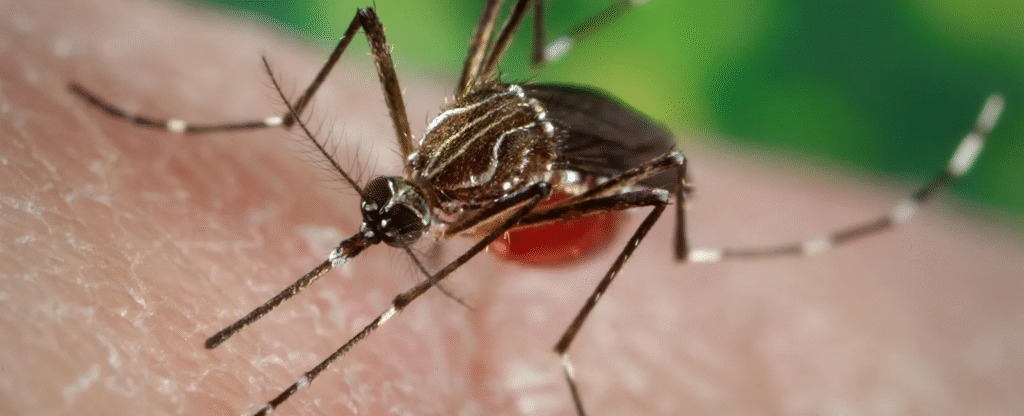
3. They Hunt You with a High-Tech Sensory Array
A mosquito finds you with the precision of a heat-seeking missile. Its primary detection method is sensing the carbon dioxide (CO2) you exhale. It can pick up on this trail from an astonishing 50 meters (about 160 feet) away. As it gets closer, it switches to other sensors. It can “see” the heat radiating from your body and is drawn to the unique chemical signature of your sweat, which contains compounds like lactic acid and ammonia. This complex system explains why some people are “mosquito magnets” while others are left alone it’s all about the signals they send out.
4. They Numb You Before They Bite
One of the most remarkable aspects of mosquito feeding habits is how stealthy they are. You rarely feel the initial bite, and that’s by design. When a female mosquito lands on you, she pierces your skin with a complex mouthpart called a proboscis. As she does, she injects a tiny droplet of her saliva. This saliva is a chemical cocktail containing a mild anesthetic to numb the area and an anticoagulant to prevent your blood from clotting. This ensures she has a smooth, uninterrupted meal. The itch and bump that follow are your body’s allergic reaction to these foreign proteins.
5. Their Wings Beat at an Unbelievable Speed
That iconic, high-pitched “buzz” that signals a mosquito’s approach is the sound of its wings beating at a furious pace. A mosquito flaps its wings between 300 and 600 times every single second. This incredible speed allows it to hover, maneuver with precision, and make quick escapes. Interestingly, male and female mosquitoes can recognize each other by the specific frequency of their wingbeats. When a male hears the right pitch, he knows a potential mate is nearby, turning the annoying buzz into a form of courtship.
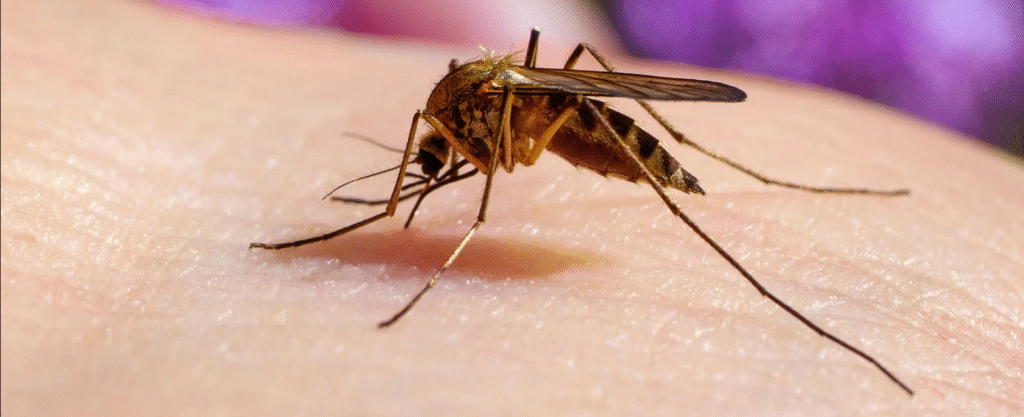
6. They Shared the Planet with Dinosaurs
Mosquitoes are ancient survivors. Scientists have discovered mosquito fossils perfectly preserved in amber that date back to the Cretaceous period, over 100 million years ago. This means these tiny insects were buzzing around and feeding on the blood of dinosaurs and other prehistoric creatures. The next time you’re bothered by a mosquito, take a moment to appreciate that you are dealing with a creature whose lineage has survived extinction events that wiped out the largest animals to ever walk the Earth. It’s one of the most humbling surprising bug facts.
7. They Have a Favorite Blood Type
If you’ve ever felt like you get bitten far more than your friends, you’re probably not imagining it. Scientific studies have demonstrated that mosquitoes, especially the species that transmit diseases like dengue, show a distinct preference. They land on people with Type O blood nearly twice as often as those with Type A blood. It’s believed they can detect chemical signals on our skin that correspond to blood type, making their hunting process even more specific.
8. They Need Water to Start Their Family
A female mosquito is very particular about where she lays her eggs. She needs standing, stagnant water. This doesn’t have to be a pond or a puddle; even the tiny amount of water collected in a discarded bottle cap or an old tire is enough. The eggs hatch into aquatic larvae, often called “wrigglers.” These larvae live in the water, feeding on microorganisms, before transforming into pupae and finally emerging as adult flying mosquitoes. This is why eliminating standing water is the most effective way to control local mosquito populations.
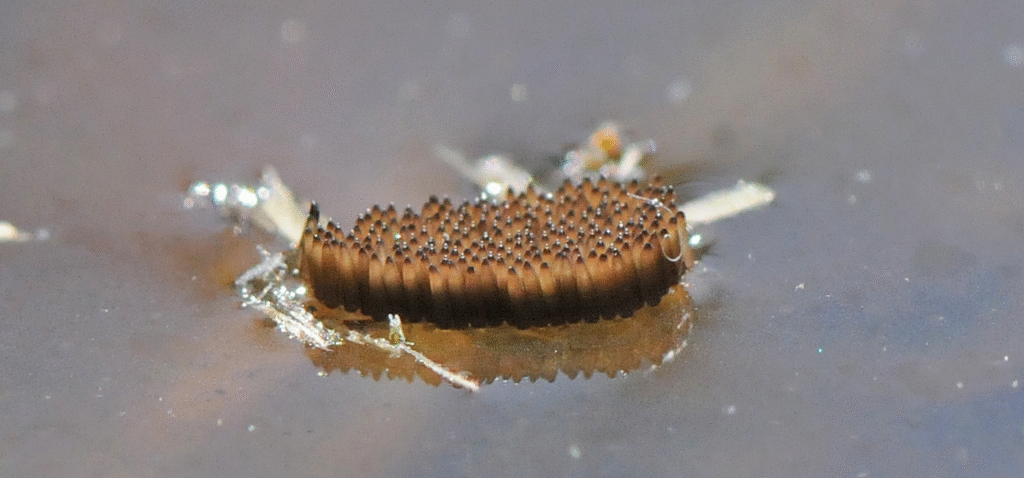
9. They Can Literally See Your Heat
In addition to sensing your body heat from a distance, mosquitoes have a form of thermal vision that helps them during the final stages of their attack. This ability allows them to see the heat signatures of blood vessels that are close to the surface of the skin. This ensures they can target their bite with maximum efficiency, hitting a capillary on the first try. It’s a remarkable adaptation that fine-tunes their highly effective mosquito feeding habits.
10. They Are Incredibly Lightweight But Strong
The average mosquito weighs only about 2.5 milligrams. It is almost weightless, which is why you rarely feel one land on you. Despite its delicate frame, it is capable of an impressive feat of strength. During a single feeding, a female mosquito can drink up to three times her own body weight in blood. This would be like an average human lifting and carrying an object that weighs 450 pounds. This is one of the most surprising bug facts about their physical capabilities. It’s a testament to the efficient design of the world’s deadliest animal.
The Fly: The Acrobatic Pilot with Bizarre Manners
The common housefly is often seen as a symbol of filth, a mindless pest to be swatted away. But this view ignores the fact that the fly is a masterpiece of biological engineering. Its flight skills are unparalleled, and its way of seeing and tasting the world is completely alien to our own.
11. They Taste the World with Their Feet
Imagine walking across your dinner table to decide what you want to eat. That’s precisely how a fly operates. Its feet are covered in specialized taste receptors called chemosensilla. The moment a fly lands on something be it a sweet slice of pie or a rotting piece of garbage it can instantly taste it to determine if it’s a worthwhile meal. This is why they seem to skitter across surfaces, taking tiny “tastes” with every step they take. This is the first strange step in understanding how flies eat.
12. They See Everything in 360 Degrees
A fly’s large, bug-like eyes are one of its most powerful assets and a key component of the fly’s vision. These are compound eyes, each made up of thousands of tiny individual lenses (around 3,000 per eye). Each lens captures a small piece of the surrounding environment. When the brain stitches all these images together, it provides the fly with an almost 360-degree field of view. This allows it to spot movement and potential threats from nearly any direction without even turning its head.
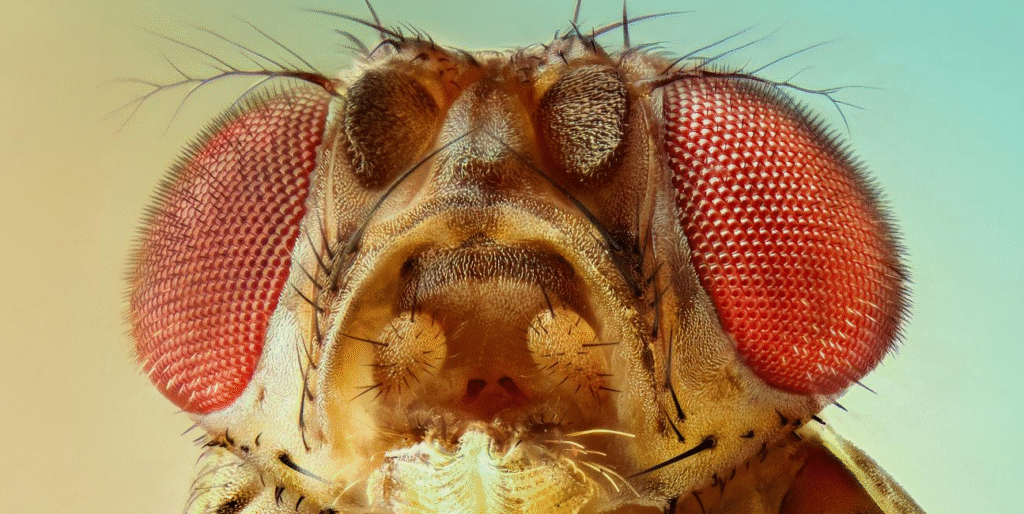
13. They Must Vomit on Their Food to Eat It
Here is where the process of how flies eat gets truly bizarre. Flies do not have teeth or jaws to chew solid food. So, to eat something like a sugar crystal, a fly must first turn it into a liquid. It does this by regurgitating a droplet of its own digestive enzymes and saliva onto the food. This potent spit-up soup begins to dissolve the solid food externally. Once it’s liquefied, the fly uses its sponge-like mouthpart, called a proboscis, to slurp up the nutritious slurry.
14. They See Your World in Slow Motion
Have you ever swung at a fly with lightning speed, only to miss completely? It’s not your slow reflexes; it’s the fly’s incredibly fast brain. A fly’s brain processes visual information about seven times faster than a human’s. This means that your fast-moving hand looks to the fly like it’s approaching in dramatic slow motion. This advanced fly’s vision gives it more than enough time to calculate an escape route and leisurely buzz away long before your hand arrives.
15. Their Feet Are Like Super-Powered Sticky Pads
A fly’s ability to walk up walls and hang from ceilings seems to defy gravity. This is made possible by the special equipment on its feet. Each foot has a pair of tiny claws for gripping rough surfaces and a pair of soft, fleshy pads called pulvilli. These pads secrete a sticky substance made of sugars and oils. This fluid creates adhesion through surface tension, allowing the fly to cling securely to almost any surface, no matter the angle.
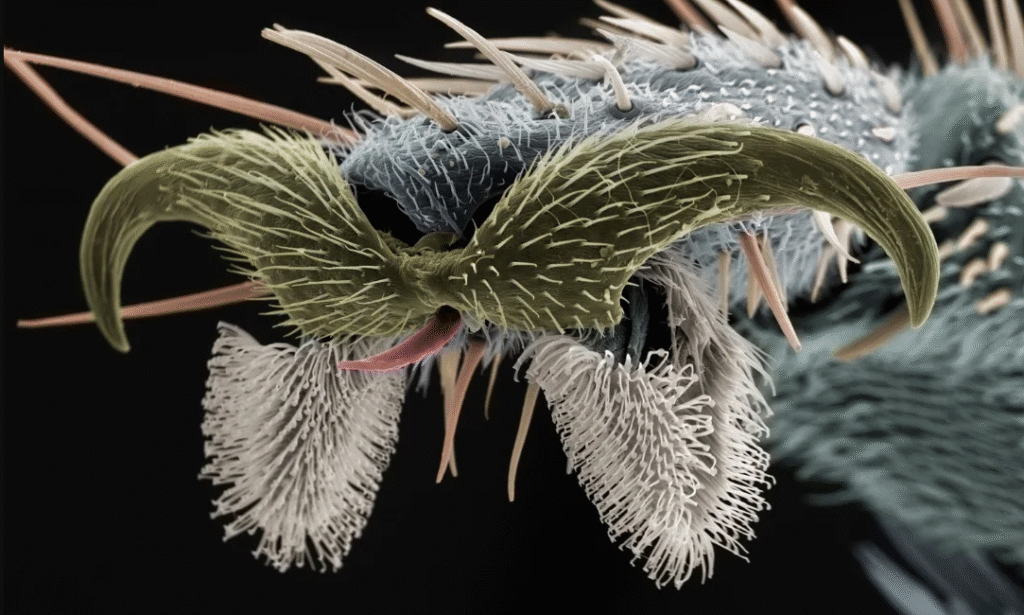
16. They Are Flying Vectors of Disease
While the mosquito is the world’s deadliest animal, the fly is a notorious carrier of germs. A single housefly can carry over 100 different pathogens on its hairy body and sticky feet. As it walks across garbage, feces, and then your food, it transfers germs like Salmonella, E. coli, and the bacteria that cause typhoid and cholera. This is why keeping flies away from your food is so important for hygiene.
17. They Are True Acrobatic Pilots
The flight of a fly is so agile and complex that it has inspired engineers designing the next generation of drones. A fly can hover in place, fly backward, turn on a dime, and even execute a perfect barrel roll to land upside down on a ceiling. It can change its direction in a fraction of a second, a feat that is almost impossible for human-made aircraft. This mastery of flight makes it an expert at both finding food and evading predators.
18. Their Entire Life Is Lived in Fast-Forward
The life of a housefly is short and intense. Under ideal warm conditions, the entire life cycle from egg to adult can be completed in as little as 10 days. The adult fly itself typically only lives for about 15 to 30 days. In that brief window, however, a single female can lay up to 500 eggs, ensuring that the next generation is always ready to take over.
19. They Are True Homebodies
Despite their incredible flying abilities, most houseflies don’t have a taste for travel. The vast majority will spend their entire lives within a one- to two-kilometer radius of the place where they were born. They generally only venture further if there is a severe lack of food or a strong wind to carry them to new territories.
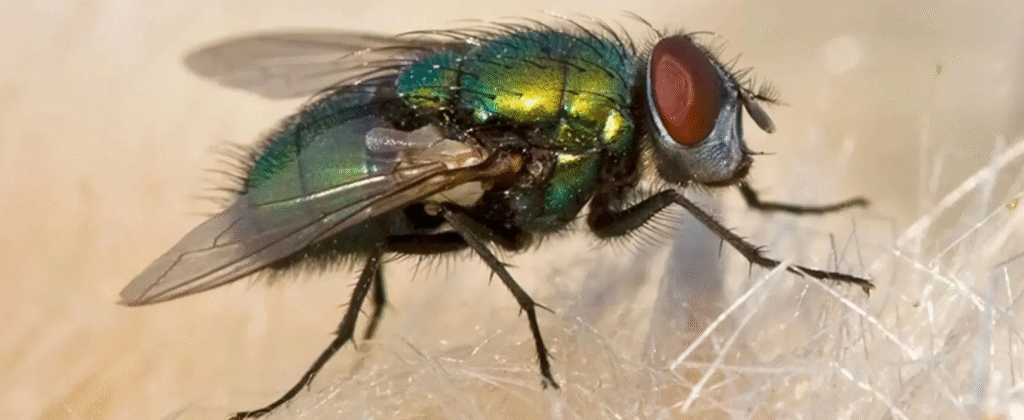
20. Their Larvae Can Be Medical Miracles
Here is one of the most surprising bug facts of all: while the adult fly spreads germs, its larvae (maggots) can be healers. In a controlled medical procedure known as maggot therapy, sterile, lab-grown maggots are placed on non-healing wounds. These maggots do something remarkable: they meticulously eat only the dead, infected tissue, leaving the healthy tissue completely unharmed. They also secrete substances that kill bacteria and promote healing, acting as tiny, living surgeons.

Have you ever imagined that an embarrassing moment in a restaurant could change the face of financial transactions forever? In a critical moment, Frank McNamara realized that forgetting his wallet was the spark that ignited a revolutionary idea: a credit card that would eliminate the need for cash. Discover how this simple idea transformed into an indispensable global system. Visit www.wonderneverends.com to learn more!


